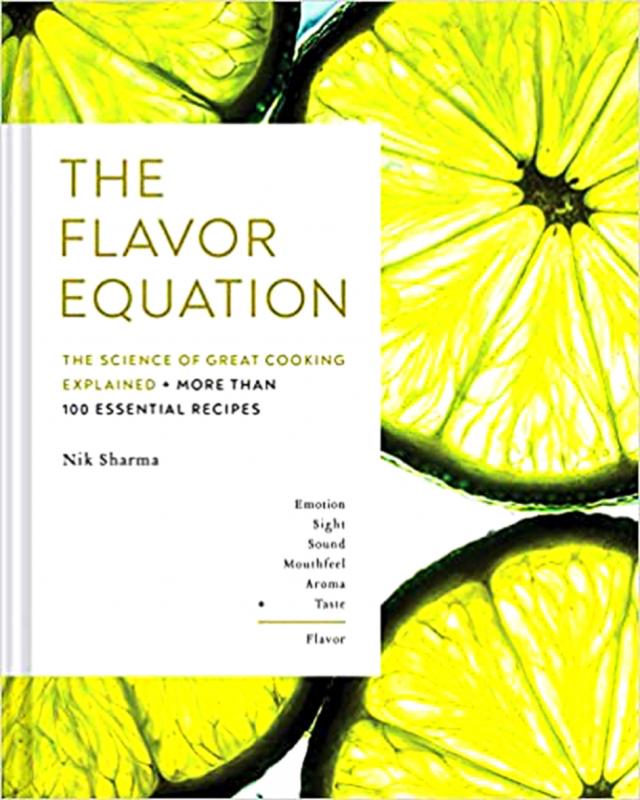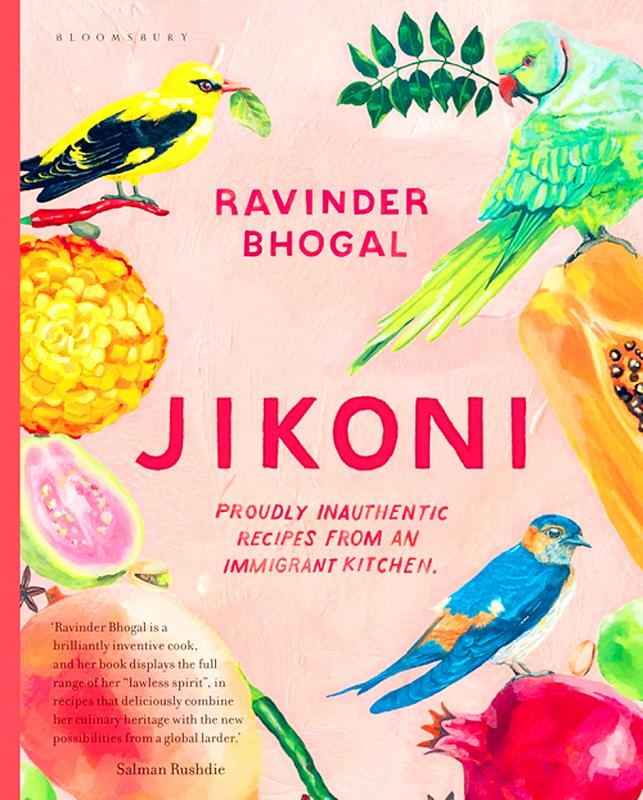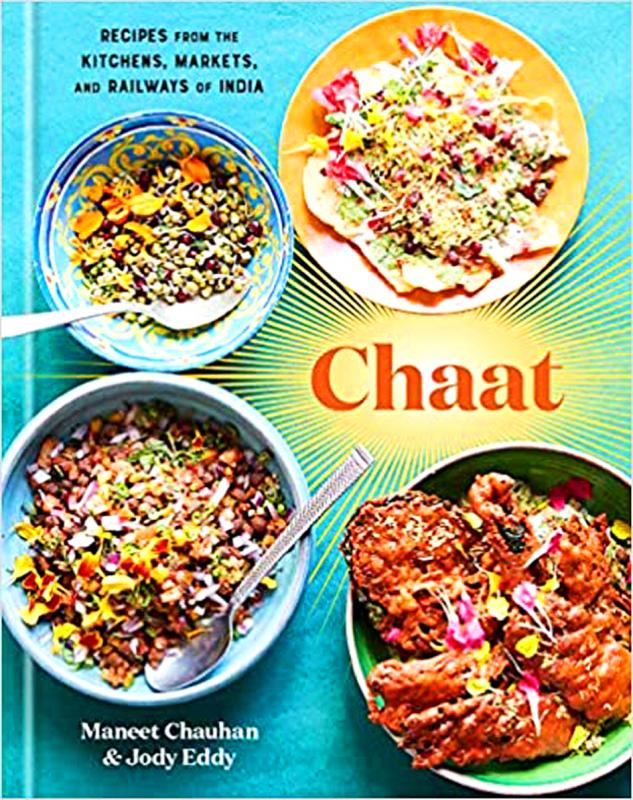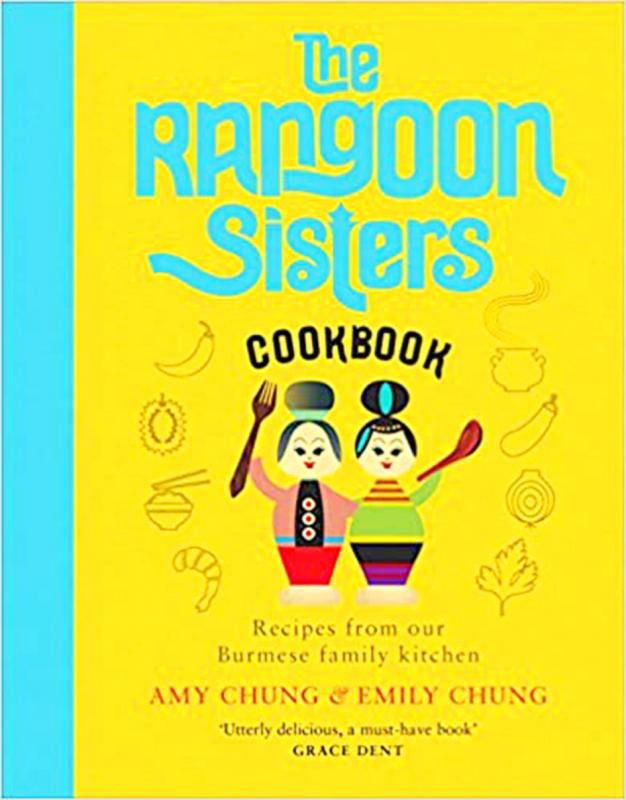The Flavor Equation: The Science of Great Cooking Explained in More Than 100 Essential Recipes
Nik Sharma / 352 pages / Chronicle Books
Sharma, a former molecular biologist, turned food writer and photographer, explores the science behind the food we eat. This isn’t Heston-esque chemistry, but the hows and whys divided into seven fundamentals: brightness; bitterness; saltiness; sweetness; savoriness; fieriness and richness — with dishes to showcase each. The recipes themselves are a delightful mashup of Indian and American flavors: “I use food as a way to connect my past with my present and future — to weave a thread between my life in India, my life in America, and the people and places I’ve seen and met along the way,” says Sharma. Favorites include a masala cheddar cornbread and a garlic and ginger dal with greens. — MT-H


Ottolenghi Flavour
Yotam Ottolenghi and Ixta Belfrage / 320 pages / Ebury

The third in his vegetarian series with Plenty and Plenty More: 100 new recipes, 45 of which are vegan, and others which can be so with little effort. “How many more ways are there to fry an aubergine?” he asks. “The answer, I am delighted to say, is many.” Co-writer/creator Ixta Belfrage has widened the Ottolenghi world. The spices have become spicier, from further afield, the shift a little further from core old-school Ottolenghi, but there is nothing here to frighten the faithful. The recipes read beautifully, the flavor profiles are carefully constructed, the warm voice in the writing reassuring. The wider world it inhabits is made comforting and accessible. In short, another Ottolenghi triumph. — AJ


Jikoni
Ravinder Bhogal / 304 pages / Bloomsbury
The joy is in the subtitle: “Proudly inauthentic recipes from an immigrant kitchen.” Born in Kenya to Indian parents (Jikoni, also the name of her smart Marylebone restaurant, means “kitchen” in Swahili), Bhogal came to the UK as a child. There is a playfulness in these pages, an openness backed by rigour, an authentic celebration of diversity, heritage and flavor. It is there to be found in the voice and recipes: an inviting blending of cross-culture favorites, such as oyster pani puri, spicy scrag end pie, or paneer gnudi with saag. A book that wears its influences lightly but with imagination and respect. — AJ
Chaat
Maneet Chauhan & Jody Eddy / 272 pages / Random House US
Essential India via the US where chef Chauhan and writer Eddy live. Chaat crisscrosses India by train from north to south, east to west, in search of the country’s quintessential snacks. The reader is transported via railway stations, markets and home kitchens. Puris, dosas and pakoras scent the pages from Lucknow, Srinagar, Jaipur, Kolkata and more, with each city’s signature street food recipes. In a year when the world has shrunk, this book may go some small way to expand it. More than any other this year, it reignited a deep hunger to travel. — AJ
The Rangoon Sisters: Authentic Burmese Home Cooking
Amy and Emily Chung / 224 pages / Ebury Press
Bright and beautiful and full of dishes I want to eat: khayan jin thee thoke (tomato and crunchy peanut salad); khayan thee hnat (stuffed baby aubergine curry), and hsi jet khauk swe (garlic oil noodles), now a favorite midweek meal. South London-born sisters Amy and Emily Chung are NHS doctors who began a supper club in 2013 to great success. “Our food isn’t fancy; we don’t present it in rings or do saucy drizzles or foams. The recipes in this book are all our home-cooked recipes,” they say. Many of the dishes come from watching their mother and grandmother cooking. Well-crafted and accompanied by enticing, colorful pictures, this book is a joy. — MT-H

Even by the standards of Ukraine’s International Legion, which comprises volunteers from over 55 countries, Han has an unusual backstory. Born in Taichung, he grew up in Costa Rica — then one of Taiwan’s diplomatic allies — where a relative worked for the embassy. After attending an American international high school in San Jose, Costa Rica’s capital, Han — who prefers to use only his given name for OPSEC (operations security) reasons — moved to the US in his teens. He attended Penn State University before returning to Taiwan to work in the semiconductor industry in Kaohsiung, where he

On May 2, Chinese Nationalist Party (KMT) Chairman Eric Chu (朱立倫), at a meeting in support of Taipei city councilors at party headquarters, compared President William Lai (賴清德) to Hitler. Chu claimed that unlike any other democracy worldwide in history, no other leader was rooting out opposing parties like Lai and the Democratic Progressive Party (DPP). That his statements are wildly inaccurate was not the point. It was a rallying cry, not a history lesson. This was intentional to provoke the international diplomatic community into a response, which was promptly provided. Both the German and Israeli offices issued statements on Facebook

May 18 to May 24 Pastor Yang Hsu’s (楊煦) congregation was shocked upon seeing the land he chose to build his orphanage. It was surrounded by mountains on three sides, and the only way to access it was to cross a river by foot. The soil was poor due to runoff, and large rocks strewn across the plot prevented much from growing. In addition, there was no running water or electricity. But it was all Yang could afford. He and his Indigenous Atayal wife Lin Feng-ying (林鳳英) had already been caring for 24 orphans in their home, and they were in

Australia’s ABC last week published a piece on the recall campaign. The article emphasized the divisions in Taiwanese society and blamed the recall for worsening them. It quotes a supporter of the Taiwan People’s Party (TPP) as saying “I’m 43 years old, born and raised here, and I’ve never seen the country this divided in my entire life.” Apparently, as an adult, she slept through the post-election violence in 2000 and 2004 by the Chinese Nationalist Party (KMT), the veiled coup threats by the military when Chen Shui-bian (陳水扁) became president, the 2006 Red Shirt protests against him ginned up by